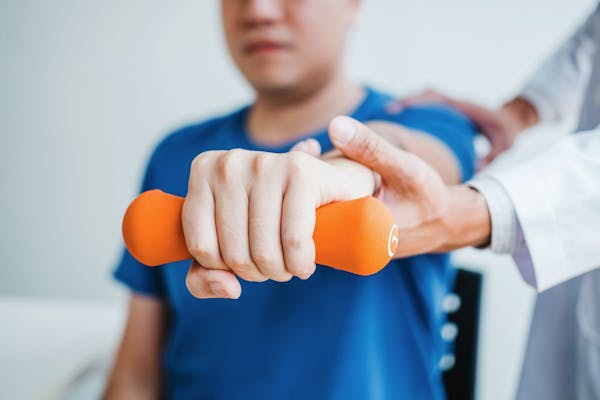Health Blog: Solutions & Wellness Tips
Six Tips to Manage Your Low Back When it Acts Up

Low back pain is so common that almost everyone experiences this problem at one time or another. Conservative care is usually in order the best choice too. This month we wanted to give you 6 quick tips that might help minimize stress on your low back and help you get back to the quality of life you once enjoyed.
- See a Physical Therapist First - most low back pain is "non-specific" in nature. In a vast majority of cases, x-rays and MRIs are of little or no help. Only your doctor and physical therapist can decide if imaging is appropriate. However, most will fit into a category of treatment that responds well to hands -on techniques.
- Medications - you may be taking an over-the-counter (OTC) or prescription anti-inflammatory medication to ease your pain. Over 70 million prescriptions for these drugs are written every year. Here's a tip - you DO NOT want to take prescription anti-inflammatory medications along with OTC anti inflammatory drugs as well. It is a mistake that can have serious consequences. Common OTC anti-inflammatory drugs are aspirin, ibuprofen, Advil, Motrin, naproxen, or Aleve. Make sure you tell your doctor or physical therapist about all of the medications you are taking. Avoiding this common mistake could save you from an upset stomach or worst case, a bleeding stomach ulcer.
- Sitting Posture - sitting usually aggravates low back pain. It puts and unbalanced load on your discs, joints and the soft tissues of your low back. If you have to sit for a prolonged period of time, make sure you are using a lumbar/low back support and it is making contact with your low back just above your belt line. This will help maintain the normal lordosis or curve in your low back.
- Practice Safe Lifting Habits - you've heard this tip before. Bend at your knees, not at your low back, keep things close to your stomach when carrying objects to decrease the torque on your back too.
- Use Pillows for Positioning - when lying down in bed on your side, make sure you put a pillow in between your knees to decrease rotation on your low back. When lying on your back, put a pillow under your needs so that they are bent. This puts the hamstrings on slack and lets the pelvis assume a position of comfort.
- Keep Bed Rest to a Minimum of Three Days - contrary to common sense, lying in bed for more than 3 days is likely to perpetuate your problem. Pain is not usually proportional to the problem. The best course of action is to get out of bed and to resume normal daily activities to the best of your ability. Chances are very good that your acute low back pain will resolve.
Bottom line, if you hurt your back, try to see a physical therapist as fast as you can. Physical therapy treatment is all natural, affordable, effective, and has little to no side effects.



